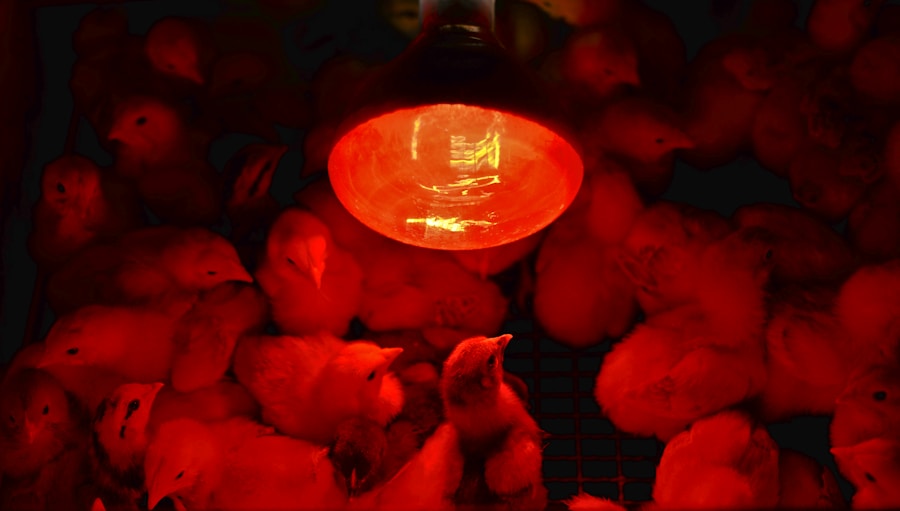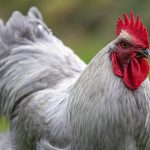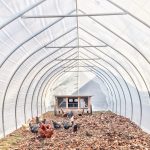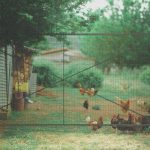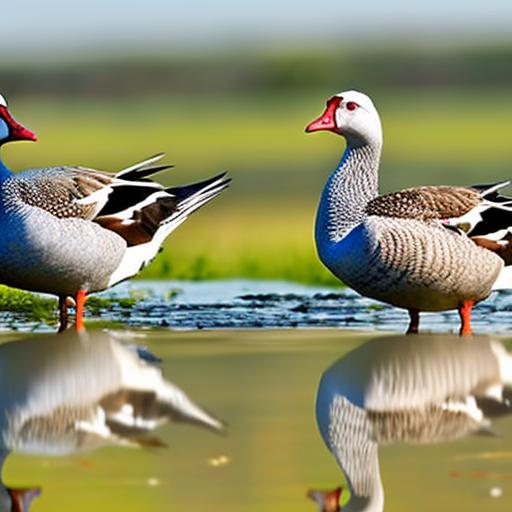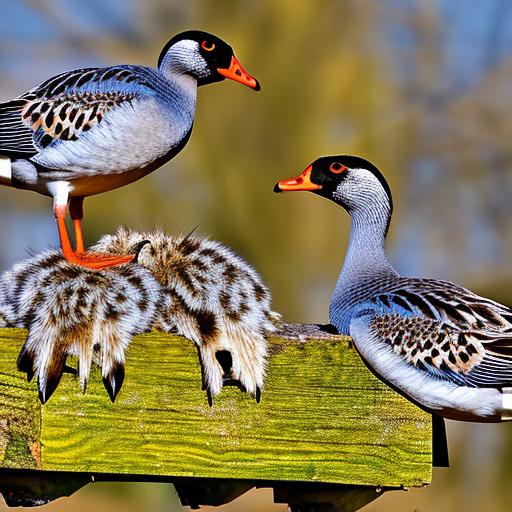Keeping chickens warm in the winter is crucial for their health and well-being. Chickens are naturally equipped to handle cold temperatures, but extreme cold can still pose a threat to their health. When temperatures drop, chickens can suffer from frostbite, hypothermia, and other cold-related illnesses. It’s important to provide them with a warm and comfortable environment to ensure they stay healthy and happy during the winter months. Additionally, keeping chickens warm in the winter can also help maintain egg production. Cold temperatures can cause hens to stop laying eggs, so providing a warm environment can help ensure a steady supply of fresh eggs throughout the winter.
Furthermore, keeping chickens warm in the winter is not only important for their physical health but also for their mental well-being. Just like humans, chickens can become stressed and unhappy in cold and uncomfortable conditions. By providing them with a warm and cozy environment, you can help keep their stress levels low and ensure they remain content and happy throughout the winter.
Table of Contents
Choosing the Right Coop Design for Winter
When it comes to keeping chickens warm in the winter, choosing the right coop design is essential. A well-designed coop can provide the necessary insulation and protection from the elements to keep your chickens warm and comfortable during the colder months. When selecting a coop design for winter, it’s important to consider factors such as insulation, ventilation, and size. A smaller coop with good insulation can help retain heat more effectively than a larger, drafty coop. Additionally, choosing a coop with a sloped roof can help prevent snow and ice buildup, which can further insulate the coop and keep it warmer.
Furthermore, the orientation of the coop can also play a role in keeping chickens warm in the winter. Placing the coop in a location that receives plenty of sunlight can help naturally warm the interior during the day. Additionally, choosing a coop with windows that can be opened and closed as needed can provide ventilation while still retaining heat. Overall, selecting the right coop design for winter is crucial for ensuring your chickens stay warm and comfortable throughout the colder months.
Insulating Your Coop for Maximum Warmth
Insulating your coop is one of the most effective ways to keep chickens warm in the winter. Proper insulation can help retain heat and prevent drafts, creating a cozy environment for your chickens to thrive in. There are several different insulation options to consider, including foam board, fiberglass insulation, and straw bales. Foam board insulation is a popular choice for its durability and effectiveness at retaining heat. It can be easily installed on the walls and ceiling of the coop to create a barrier against the cold.
Additionally, using straw bales around the exterior of the coop can provide an extra layer of insulation and protection from the elements. Straw bales are an affordable and effective way to keep the coop warm and can also help prevent drafts from entering through cracks and gaps in the walls. When insulating your coop for maximum warmth, it’s important to pay attention to areas where drafts are most likely to occur, such as around doors, windows, and vents. By properly insulating these areas, you can help ensure your chickens stay warm and comfortable throughout the winter.
Providing Adequate Ventilation While Keeping Chickens Warm
While it’s important to keep chickens warm in the winter, it’s equally important to provide adequate ventilation to maintain good air quality inside the coop. Proper ventilation can help remove excess moisture and ammonia from the air, which can build up in a confined space and pose a threat to your chickens’ respiratory health. When providing ventilation in the winter, it’s important to strike a balance between retaining heat and allowing fresh air to circulate. This can be achieved by installing adjustable vents that can be opened or closed as needed to regulate airflow.
Additionally, positioning vents near the roof of the coop can help prevent drafts from entering while still allowing stale air to escape. It’s also important to regularly clean and maintain vents to ensure they remain free from debris and obstructions. By providing adequate ventilation while keeping chickens warm in the winter, you can help maintain good air quality inside the coop and ensure your chickens stay healthy and comfortable throughout the colder months.
Using Heat Lamps and Heaters Safely
In some cases, using heat lamps or heaters may be necessary to keep chickens warm in extremely cold temperatures. However, it’s important to use these heating devices safely to prevent fire hazards and ensure your chickens’ safety. When using heat lamps or heaters in the coop, it’s important to position them securely and out of reach of flammable materials such as straw or bedding. Additionally, using a thermostat-controlled heater can help regulate temperatures and prevent overheating.
Furthermore, it’s important to regularly inspect heating devices for any signs of wear or damage and replace them as needed. It’s also important to have a backup heating plan in place in case of power outages or equipment failure. By using heat lamps and heaters safely, you can provide additional warmth for your chickens while minimizing the risk of fire hazards and ensuring their safety throughout the winter.
Offering Warm Bedding and Roosting Options
Providing warm bedding and roosting options is essential for keeping chickens warm in the winter. Bedding such as straw or wood shavings can provide insulation from the cold ground and help retain heat inside the coop. Additionally, offering plenty of bedding material can give your chickens a cozy place to nestle down and stay warm during the colder months. It’s important to regularly clean and replace bedding to prevent moisture buildup and maintain good hygiene inside the coop.
Furthermore, providing roosting options such as elevated perches can help keep chickens off the cold ground and allow them to huddle together for warmth. Roosting bars should be wide enough for chickens to comfortably perch on without their feet getting cold or cramped. By offering warm bedding and roosting options, you can create a comfortable environment for your chickens to stay warm and cozy throughout the winter.
Monitoring Your Chickens’ Health and Comfort Throughout the Winter
Throughout the winter months, it’s important to regularly monitor your chickens’ health and comfort to ensure they are staying warm and happy. Keep an eye out for signs of cold-related illnesses such as frostbite or respiratory issues, and take action promptly if any issues arise. Additionally, regularly checking on your chickens’ food and water supply is crucial to ensure they have access to essential nutrients and hydration during the colder months.
Furthermore, observing your chickens’ behavior can provide valuable insight into their comfort levels. If you notice any signs of stress or discomfort, such as huddling together for warmth or decreased activity, it may be necessary to make adjustments to their environment to ensure they stay warm and content. By monitoring your chickens’ health and comfort throughout the winter, you can take proactive measures to ensure they stay happy and healthy during the colder months.
In conclusion, keeping chickens warm in the winter is essential for their health and well-being. By understanding the importance of warmth, choosing the right coop design, insulating the coop for maximum warmth, providing adequate ventilation, using heating devices safely, offering warm bedding and roosting options, and monitoring your chickens’ health and comfort throughout the winter, you can create a cozy environment for your chickens to thrive in during the colder months. With proper care and attention, you can ensure your chickens stay warm, healthy, and happy throughout the winter season.
Meet Walter, the feathered-friend fanatic of Florida! Nestled in the sunshine state, Walter struts through life with his feathered companions, clucking his way to happiness. With a coop that’s fancier than a five-star hotel, he’s the Don Juan of the chicken world. When he’s not teaching his hens to do the cha-cha, you’ll find him in a heated debate with his prized rooster, Sir Clucks-a-Lot. Walter’s poultry passion is no yolk; he’s the sunny-side-up guy you never knew you needed in your flock of friends!

